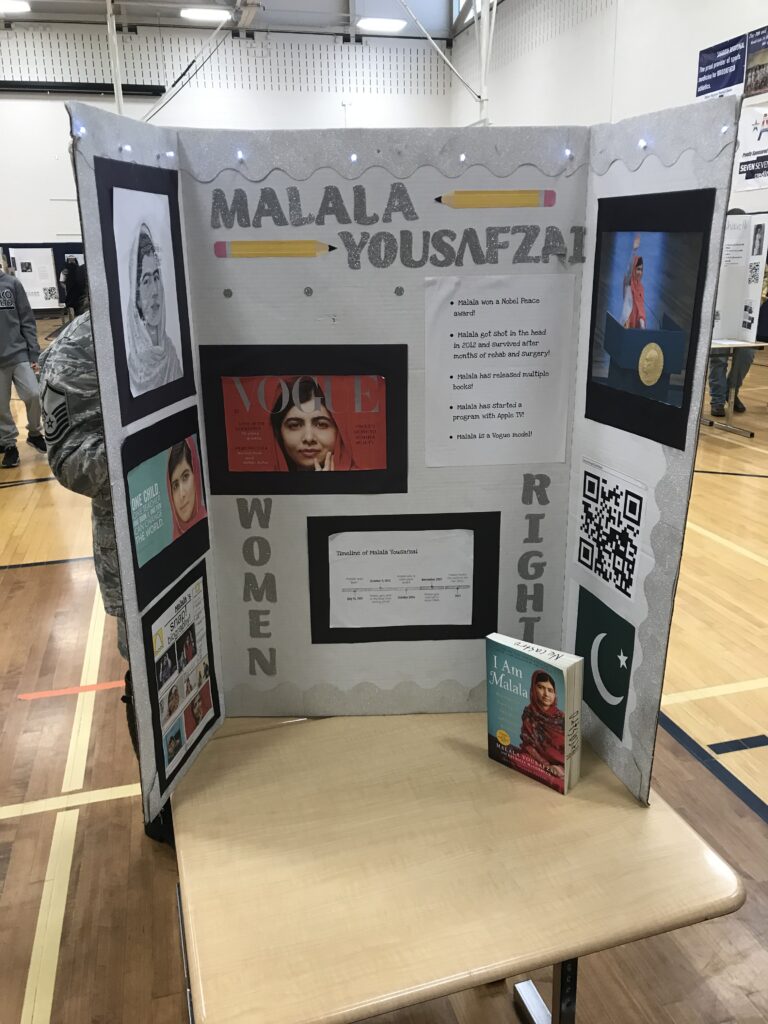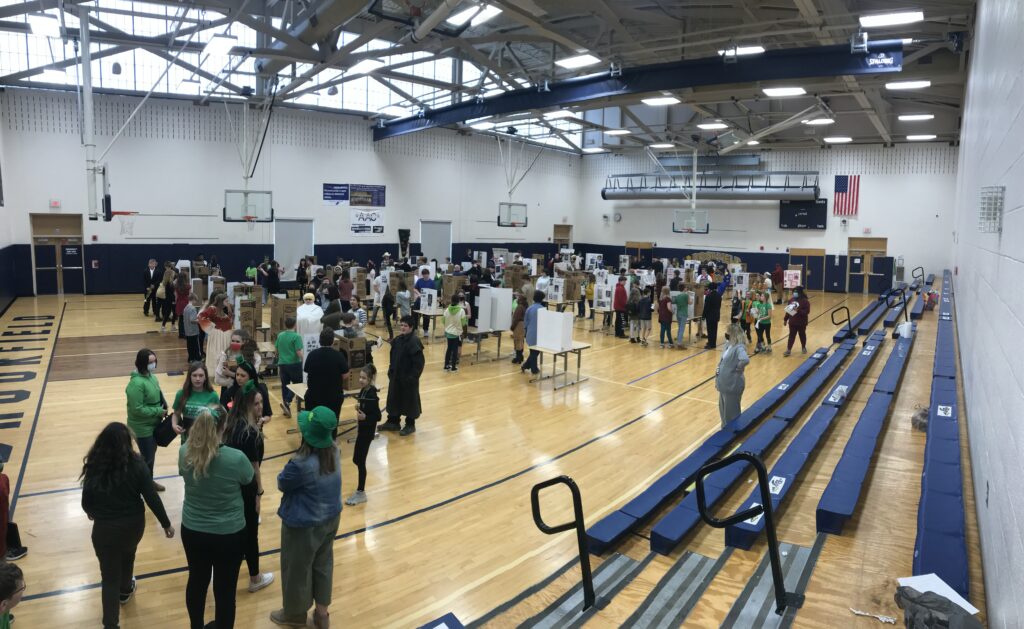This post is written by Miriam Necastro. Read more about Miriam at the bottom of this post.
They say you can’t go home again. However, in the case of myself and some of my colleagues, we did by returning for round two at Brookfield Middle School; this time as teachers. At the beginning of the previous school year, our principal had set a goal for us to conduct more cross-curricular collaborations. When we were turned loose for common planning time with our grade-level teachers, we began brainstorming what we could integrate seamlessly across the curriculum divide. My colleague Brad, who teaches 7th grade World History, is also an alum of Brookfield. We started to reminisce about the different cross-curricular projects we completed during middle school. We both agreed that it was as if most of our classes back then were involved in these instructional projects. The other element we remembered was the excitement–our teachers were excited, which made us excited.
The project in question was known as the “Millennium Project.” At this time, during the early 2000s, A&E Biography released the program “100 Most Influential People of the Millennium.” In our World History class, our teacher wrote each of those individuals on slips of paper, and during class, we drew a name out of a cup. The name of the influential person we drew was the person we would be researching during classes, writing an informational essay, first-person biographical speech, creating a visual display, and portraying this person during the Night at the Museum presentation. What if we brought this project back to life after a seventeen-year hiatus?
We started by creating a dual Google Classroom page where we sectioned off different topics for all the project materials, examples, and assignment drop boxes. He covered the history assignments while I did the Language Arts ones. For example, areas of historical research would be covered by history, while ELA would cover the biographical essay. Based on the event date that was scheduled on the school calendar, we then collaborated on due dates for essential project assignments, agreeing that these would be flexible, if need be, once the unit got underway. Since the students had never completed a large project of this nature, covering two of their core classes, we knew this would be a learning experience for everyone. The fun part came first– having the students select the influential person they would be portraying for the project. The list of influential people ranged from Gandhi to Diana, Princess of Wales to Jane Goodall, Tomoe Gozen, George Washington, Jackie Robinson, Neils Bohr, Dolly Madison, and others.

The best collaboration tool we utilized was Google Classroom. Creating a joint classroom page specifically for this project assisted us in making sure that all students had the same information and materials in one central location. For example, research database websites were organized in their separate section, and my colleague and I would add links if we found a new site that would benefit student research. From an ELA and World History standpoint, we emphasized the importance of credible resources for research, especially when in seventh grade, Wikipedia is so convenient. Our students knew the ‘Research Resources’ section of Google Classroom as their one-stop shop. In an effort to not only conserve paper but also lessen the chances of lost materials, everything was digital. Students printed out their visual presentation text elements when constructing their museum board. As with Google Classroom, we could see student progress on the different parts and pieces of the project, so we could differentiate our instruction in our respective classrooms.
We know students always like to ask the question, “when am I going to use this outside of class?” We felt this project was the perfect opportunity to answer that question and put it to practice. Even though this was considered a history project at first look, the majority of the project was rooted in ELA. Without the Language Arts/writing skills, the students would not have been able to complete the project. The biographical essay that the students completed for their influential person aligned with the Ohio State Test Informative Writing Rubric, and used the research they completed in history class. In both classes, we expressed the importance of not just copying and pasting information from their research sources into their essay; they must use their personal voice. In doing so, not only did it save them from plagiarism, but it also proved to us that they understood the information. They read the information, processed it, decided how it fit into the boundaries of the project, then, put it in their own words. Historical research plus writing and grammar skills combined in these areas of the project: historical research outline, biographical essay, visual display title, biographical timeline, key facts, word cloud, and fake social media page. ELA standards also include goals for speaking and listening. Students fulfilled this standard by using points from their biographical speech to write a speech from the perspective of their historical person to deliver during the “Night at the Museum” event when someone came up to their station.

The culminating event took place during school hours, where our seventh-grade students dressed as their historical person, stationed in front of the visual display they created, celebrating and sharing their knowledge acquired in both history and ELA over the last months. This project proved that lines between curricula don’t have to be so definite. If we combine our areas of expertise as teachers, we can maximize student learning.

Miriam Necastro has 6 years teaching experience and is the 7th grade ELA & Reading teacher at Brookfield Middle School; Brookfield, Ohio. She is currently pursuing an M.Ed in Literacy from Clemson University.
Photo by Skye Studios on Unsplash

I love this! Kudos to you and Brad for making your curriculum relevant, interesting, meaningful, and challenging.
I hope folks recognize that such a project involves WAY more work for you as a teacher than you ask of your students. But seeing those light bulbs go on in their heads is more than worth it (as I’m sure you already know). We need more teachers like the two of you! Can’t wait to hear about your future collaborations!